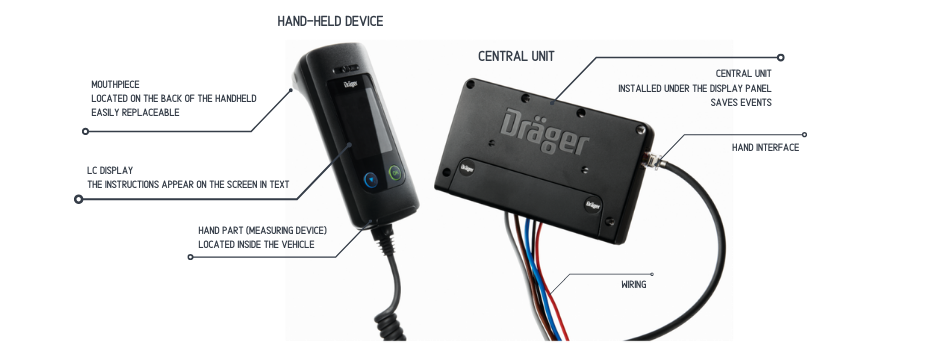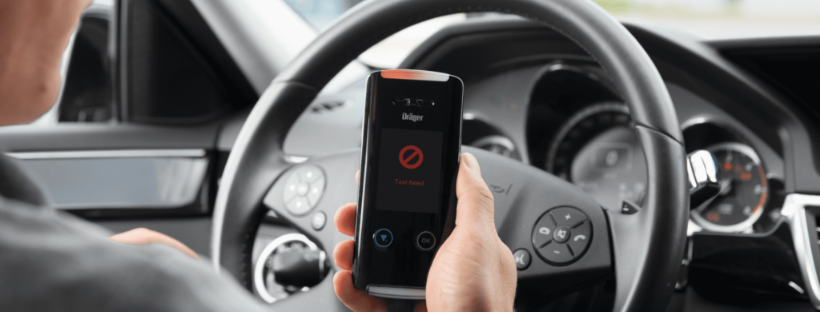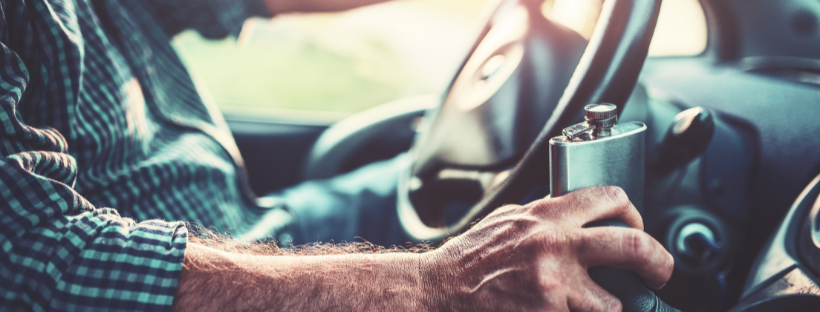An alcohol interlock can save lives

What is an alcohol interlock device and how does it work?
An alcohol interlock is a safety device connected to the vehicle’s starter to prevent the car from being started and used by a drunk or residual driver. It is common in taxis, buses, trucks, and rental cars, but is also ideal for installation in a personal vehicle.
Driving under the influence of alcohol is a major part of traffic crime, but installing an alcohol interlock in a vehicle can contribute to a safer traffic culture, saving lives and reducing property damage.
The alcohol interlock installed by Navirec is accurate and reliable
The alcohol interlock offered by Navirec has two main components: a hand-held device (remote control) located at the driver and a central unit (CPU) that is connected to the vehicle’s starting system.

To start the vehicle engine, the driver must provide a sample. To provide a sample, the driver has to blow into the mouthpiece located on the hand-held device. If the device detects alcohol in the driver’s exhaled air, the vehicle cannot be started. It is also possible to set up automatic notifications in the Navirec solution. This way, the fleet manager, for example, is notified when alcohol is detected.
The driver must give a blow test if the car’s engine has been switched off for more than 15 minutes. The device may also require the driver to repeat the test from time to time while driving, to prevent anyone other than the driver from taking the test. If no new blowing is performed or the device detects alcohol, the CPU locks the event. The device also signals to the driver that the vehicle must be stopped immediately and the engine switched off.
The alcohol interlock installed by Navirec is made by the world’s leading manufacturer of alcohol measuring devices and is extremely precise. The police use equipment with the same principle. The alcohol interlock cannot be manipulated and all device-related operations (blowing and non-dispensing samples, measured alcohol contents, engine starts and stops, tampering attempts) are stored in the alcohol interlock’s CPU.

Why consider installing an alcohol interlock on a vehicle?
If driving is part of a person’s everyday activities, then an alcohol interlock is also a solution that offers peace of mind to an individual. A high-quality device is very accurate and makes it possible to avoid endangering the lives of oneself and others and the possibility of getting into trouble with the law.
For companies, the risks associated with drunk drivers are even greater. In addition to endangering human lives, drunk drivers or those with residual symptoms also risk damaging the company’s goods, vehicle and reputation. In many countries, the use of an alcohol interlock is mandatory for vehicles carrying passengers or dangerous goods.
With the Navirec alcohol interlock, you can quickly identify employees who abuse alcohol and protect the assets of the company as well as the lives of other road users.

What are the rules for drivers in Estonia and elsewhere?
In Estonia and elsewhere in Europe, the permitted limits for alcohol and the penalties for drunk driving are different. The rates set for professional drivers may also differ. If the company’s vehicles also drive around outside Estonia, it is good to know these principles.
In Estonia, the unit mg/l is used to measure the alcohol in the exhaled air. Blood alcohol content is measured in parts per thousand (‰) or mg/g. The alcohol content of the blood can be known by multiplying the alcohol content measured in the exhaled air by two (eg: 0.3 mg/l x 2.1 = 0.63 ‰).
In Estonia, the permitted alcohol content of exhaled air for drivers is 0.09 mg/l.
The alcohol content of 0.75 mg/l exhaled air (or 1.5 ‰) is considered a criminal intoxication.
For example in the United Kingdom, both private and professional drivers can sit behind the wheel with a blood alcohol content of 0.8 ‰. In Spain, private individuals can drive with a 0.5 ‰ reading, but professional drivers must be completely sober. In Germany, there is a zero tolerance for blood alcohol content for drivers.
In Estonia, the Penal Code provides for a fine or up to 3 years’ imprisonment as a punishment for driving a car while intoxicated.
In Norway, however, drunk drivers are punished by a minimum of 21 days’ imprisonment and driving disqualifications for 2 years. In Finland and Sweden, drunk drivers may choose to have an alcohol interlock on their vehicle instead of being penalized.
You can find a complete overview of alcohol limits in Europe on the Digigeenius page.
Get an alcohol interlock for your vehicle from Navirec
It is now possible for anyone, both individuals and companies, to purchase a reliable alcohol interlock from Navirec. We ask the managers of larger car fleets to submit a price request to our sales department.
To install an alcohol interlock, you can come to our representative office in Tallinn or agree on a suitable place and time all over Estonia.


